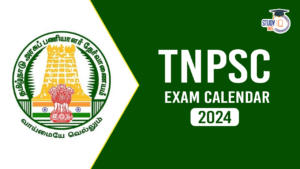Table of Contents
Exam View: Tourism Sector in India, Driving factors of Tourism Sector in India, India’s potential for tourism, Recent Tourism-Related Initiatives in India.
In News: As the world moves on, the service sector, with the travel and tourism business included, is emerging as a major growth engine for the Indian economy.
- Tourism is seen as a major driving force for any economy over the world. It has a multiplier effect on associated industries like hospitality. The spill over of earnings from tourism into other industries not only improves the economic conditions but also enhances the standards of living of the local population.
- India’s tourism industry is a significant economic multiplier and is getting more crucial as the nation aims for rapid economic growth and the creation of employment opportunities.
- However, there are several issues facing the Indian tourism industry, including a lack of infrastructure, sustainability, climate change, and pollution.
- While India takes on the presidency of the G20 and starts preparing for the summit in 2023, positioning the country as a safe, tourist-friendly destination hinges on how the government can work together with the industry and provide a world-class experience to visiting dignitaries.
Driving Factors of the Tourism Sector in India
- The Tourism Sector in India is driven by various factors like diverse attractions, robust demand and attractive opportunities.

India’s Potential for Tourism

Challenges Related to the Tourism Sector in India
- Lack of Proper infrastructure or foundation: An established framework of the foundation includes lots of elements. Proper transportation facilities, health facilities, and stability. Also, uninterrupted connectivity and other human resources are mandatory for enduring tourism.
- Pollution and Climate Change: Our major tourist sites (heritage sites) are also affected by pollution. India still struggles to protect its wonder, the Taj Mahal, from pollution. There have been floods in India in recent years, including in places where heritage sites are located, as a result of climate change.
- Safety and Security Issues: India has faced challenges with regard to the safety and security of tourists, particularly in certain areas of the country. This can deter tourists from visiting certain destinations and can also impact the overall perception of India as a tourist destination.
- Lack of Skilled Manpower: There is a dearth of skilled manpower especially multi-lingual tour guides or hotel staff. The sector is dominated by small unorganized players who can’t spend on skilling their employees or sensitising them to the cultural values of foreign tourists.
- Unsustainable Tourism: In India, especially in the Himalayan regions, where resources are already scarce, unsustainable tourism often puts pressure on natural resources through the overconsumption of natural resources.
- Security issues: Security is one of the Major Challenges of Indian Tourism. Increasing the rate of Sexual Abuse of women, Theft, and Credit Card Fraud. Moreover, Identity Theft, Food Poisoning, and Terrorism. Also, Public Violence is affecting Indian Tourism to a high intent.

Way Forward
- Making the $1 trillion dream a reality: The travel and tourism industry is on a constant path of evolution, catering to rapidly changing consumer demands by creating several product options, elevating customer experiences, and continuing to deliver innovative digital solutions.
- Tourism Infrastructure Development through public-private partnerships: Investing in the development of infrastructure, such as roads, airports, and hotels, would make it easier for tourists to access and travel around different parts of the country.
- Visa Simplification: Streamlining the visa application process and making it more accessible for foreign tourists would encourage more people to visit India. This could be done through the implementation of online visa systems and the expansion of visa-on-arrival programs.
- Focusing on Safety and Security: This could be achieved through measures such as the deployment of tourism police, the implementation of security protocols at tourist attractions, and the promotion of safe travel practices.
- Promote green and sustainable tourism: To address the issue of overcrowding and the impact on the environment, the tourism industry could focus on promoting sustainable tourism practices.
- Creating a Unified Tourism Portal: A rigorous market research and evaluation exercise can be conducted in order to identify desired tourist destinations across the nation.
- Philosophy of Vasudhaiva Kutumbakam: India’s philosophy of Vasudhaiva Kutumbakam gives it an unwavering belief in multilateralism. Considering India’s rich heritage and culture, an unmatched diversity of cuisine tourism can be an effective tool for enhancing India’s soft power and attracting foreign revenue.
If the goal of the positioning India as one of the world’s best tourism destinations by 2047, there is a need to integrate various schemes of different ministries. Need to involve various stakeholders, and local communities; necessary interventions at an urban and rural level should be a priority.


 World Malaria Day 2024, Obsereved annual...
World Malaria Day 2024, Obsereved annual...
 Current Affairs 24th April 2024 for UPSC...
Current Affairs 24th April 2024 for UPSC...
 TNPSC Exam Calendar 2024, Check Exam Dat...
TNPSC Exam Calendar 2024, Check Exam Dat...

















